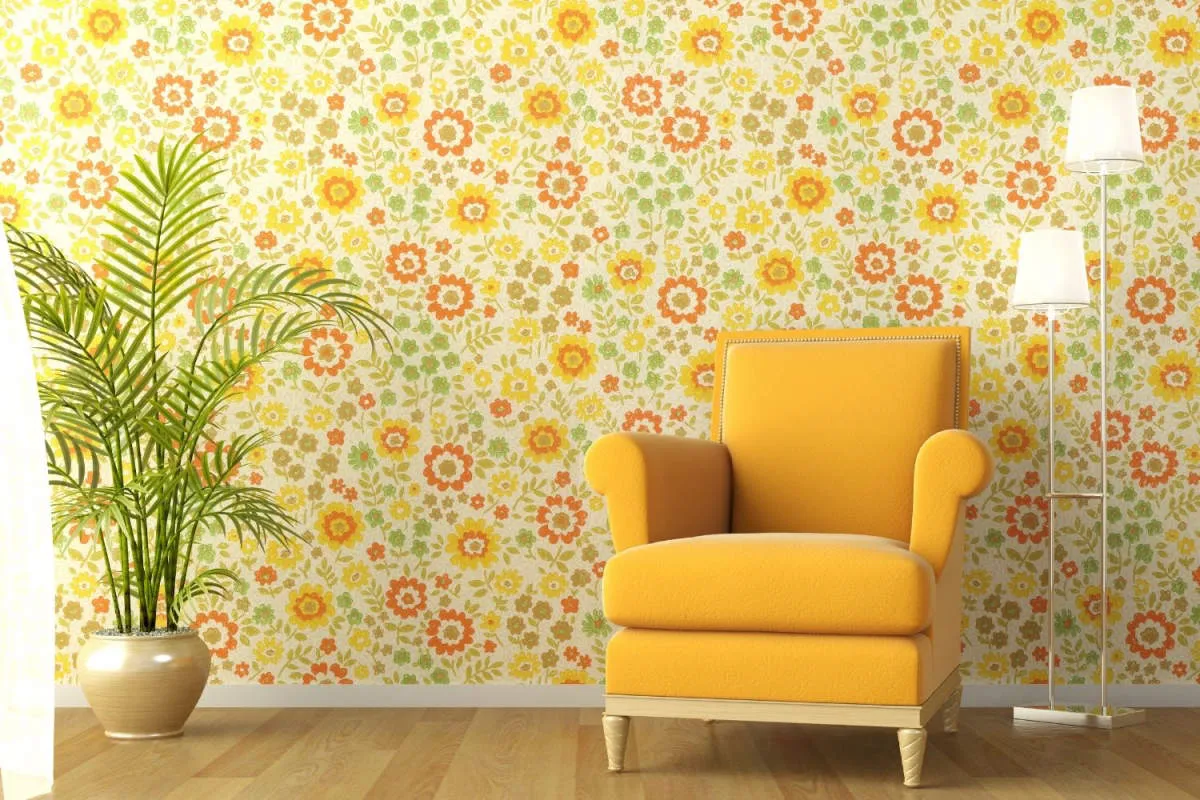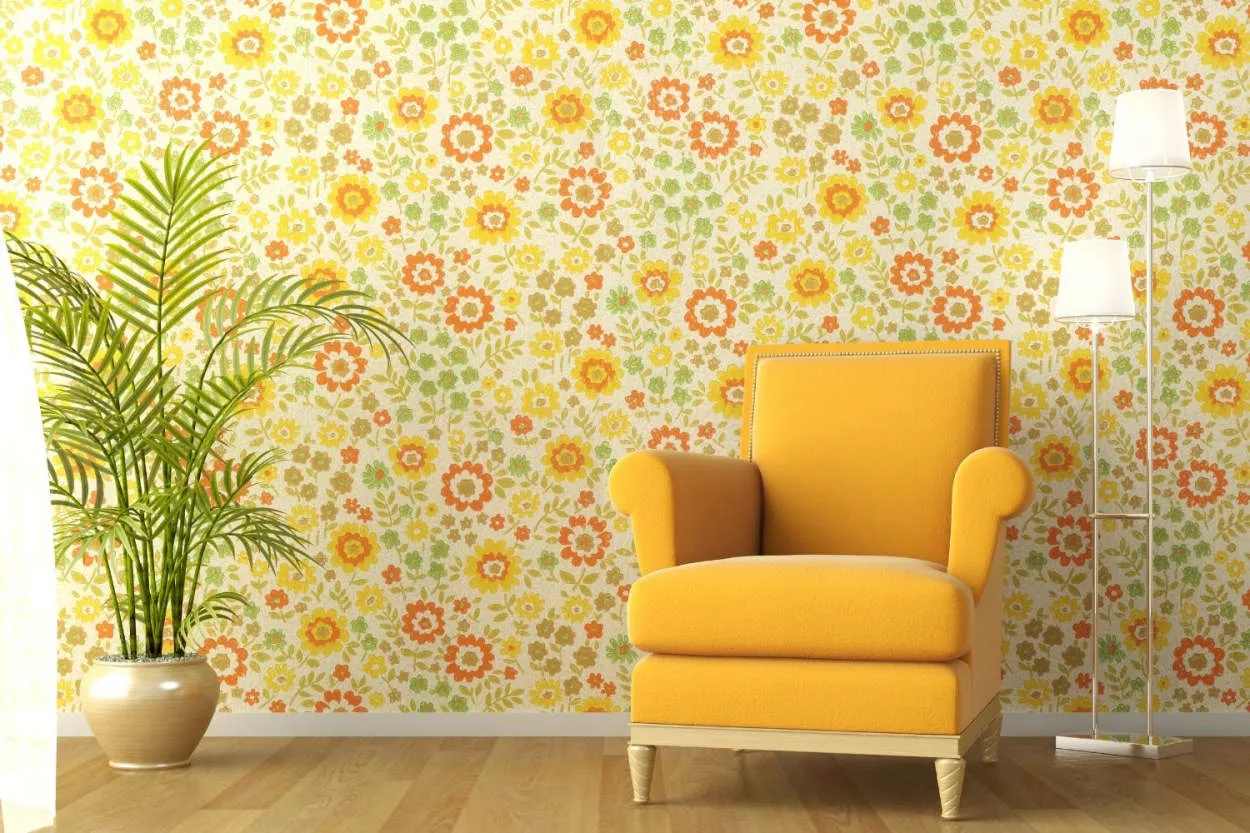When it comes to small spaces, choosing the right wallpaper can make a big difference. Whether you want to create a sense of depth, add a pop of color, or make a statement, selecting the perfect wallpaper can transform your small space into something extraordinary. In this article, we will explore the various factors to consider when choosing wallpaper for small spaces.
Illusions of Space with Wallpaper

When it comes to decorating small spaces, choosing the right wallpaper can make a significant difference. Wallpaper has the power to create illusions of space and transform a cramped room into a visually appealing and more spacious-looking area. Here are some tips on how to use wallpaper to maximize the perceived space in your small rooms:
1. Light and Bright
Opt for light and bright colors for your wallpaper. Pale tones and pastel shades reflect more light, making the room feel airy and open. Avoid dark colors as they tend to make spaces feel smaller and more confined.
2. Vertical Stripes
Vertical stripes on wallpaper create an optical illusion that elongates the walls. This technique draws the eye upward, giving the impression of higher ceilings and more vertical space. Consider using wallpapers with vertical patterns or stripes to make your small space feel taller.
3. Geometric Patterns
Geometric patterns on wallpaper can trick the eye into perceiving depth and volume. Opt for wallpapers with geometric designs, such as chevron, diamond, or hexagon patterns, as they can create an illusion of more space. These patterns add visual interest to the walls and give the impression of an expanded area.
4. Mirrored Wallpaper
If you’re looking to create the illusion of a bigger room, consider using mirrored wallpaper. Mirrors reflect light and create a sense of depth, instantly making a room feel more expansive. This technique is especially effective when combined with a light-colored wallpaper.
5. Minimalistic Designs
In small spaces, less is often more. Opt for wallpapers with minimalistic designs or patterns. Busy or intricate designs can overwhelm the eye and make the room feel cluttered. Simple and clean wallpapers, such as solid colors or subtle textures, can create a sense of calm and space.
By choosing the right wallpaper design, color, and pattern, you can create the illusion of a larger and more airy space in your small rooms. Experiment with different options and consider professional advice to make the best choice for your specific space. Remember, the right wallpaper can have a transformative effect on how your room looks and feels.
Selecting Patterns for Small Rooms
In the quest to maximize space and create visually appealing small rooms, selecting the right wallpaper pattern is crucial. The choice of pattern can significantly impact how a small room appears and feels. Here are some key considerations to keep in mind when choosing wallpaper for small spaces:
1. Opt for Light and Neutral Colors
Light and neutral colors are ideal for small rooms as they create an illusion of spaciousness. Pastels, whites, and creams can make a room feel more open and airy. Avoid dark and bold colors that can make the space feel cramped.
2. Use Small-Scale Patterns
Large patterns can overwhelm a small room and make it feel visually cluttered. Instead, opt for small-scale patterns that are proportionate to the room size. Delicate prints, subtle geometric shapes, or small floral designs can add depth without overwhelming the space.
3. Consider Vertical Stripes
If you want to create an illusion of height in a small room with low ceilings, vertical striped patterns can be a great choice. Vertical lines draw the eyes upward, making the room appear taller than it actually is.
4. Balance with Solid Colors
While patterns add interest and personality to a small room, it’s important to balance them with solid colors. Too many patterns can make the space feel chaotic. Consider incorporating solid-colored elements such as furniture, curtains, or accent pieces to provide a visual break and maintain a harmonious balance.
5. Take Room Function into Account
The function of the room should also influence your pattern selection. For example, if it’s a bedroom, opt for calming and soothing patterns to create a peaceful environment. In a home office, choose patterns that inspire creativity and focus.
6. Test Samples
Before committing to a specific wallpaper pattern, it’s essential to test samples in the actual room. Lighting and other elements can affect how patterns appear in different spaces. By testing samples, you can ensure the pattern looks as desired and complements the room’s overall aesthetics.
7. Seek Professional Advice
If you’re unsure about which pattern to choose, don’t hesitate to seek advice from professional interior designers. They can help you select a wallpaper pattern that suits your small room, taking into consideration the existing decor, lighting, and your personal style preferences.
By carefully selecting patterns for small rooms, you can transform them into visually pleasing, well-designed spaces. Keep these considerations in mind and let your creativity shine to enhance the charm of your small space!
Color Choices for Expanding Space
When it comes to decorating small spaces, choosing the right wallpaper can make a significant difference. The colors you select can create an illusion of a larger and more spacious area. Here are some essential color choices to consider:
1. Light Colors
Light shades such as pastels, whites, and creams can open up a room and make it appear more expansive. These colors reflect natural light, creating a brighter and airier atmosphere. They work particularly well in rooms with limited natural light or those that lack windows.
2. Neutral Tones
Neutral colors like beige, gray, or taupe are excellent options for small spaces. These shades create a versatile backdrop that allows you to add pops of color through furnishings and accessories. Neutrals also give a sense of calmness and serenity to a room, making it feel more spacious.
3. Monochromatic Schemes
Using different shades of the same color can create a visually dynamic space without overwhelming it. Consider combining various tones and intensities of a single color, such as different shades of blue or green. This technique adds depth while maintaining a harmonious and cohesive look.
4. Vertical Stripes
Vertical stripes have a visually elongating effect, making them ideal for small spaces with low ceilings. Incorporating wallpaper with vertical stripes can create the illusion of height, making the room feel more expansive. Opt for thinner stripes in light or neutral colors for the best result.
5. Wallpapers with Texture
Adding texture to your wallpaper can give the perception of depth and dimension to a room. Textured wallpapers, such as grasscloth or faux brick, can make the walls appear further away, creating a sense of spaciousness. However, be cautious not to overdo it; choose a subtle texture that complements the overall design.
Remember, the right color choices for your wallpaper can significantly impact the perceived size of your small space. Experiment with these suggestions and find the combination that best suits your style and enhances the expansion of your room.
Wallpaper Application Techniques
When it comes to small spaces, choosing the right wallpaper can make a significant difference in enhancing the overall aesthetic appeal. Here are a few techniques to keep in mind when applying wallpaper in small spaces:
1. Opt for Light Colors
Light-colored wallpapers tend to create an illusion of space by reflecting more light. Consider using pastels, neutrals, or soft shades that can brighten up the room and make it feel more open.
2. Use Vertical Patterns
Vertical patterns are excellent for creating an illusion of height. Opt for wallpapers with vertical stripes or designs that draw the eye upward, making the space appear larger and more expansive.
3. Consider Textures and Faux Finishes
Introducing textures can add depth to a small space. Consider wallpapers with delicate textures or faux finishes, as they can bring visual interest to the walls while minimizing the busy appearance.
4. Accentuate a Single Wall
Choose one wall as a focal point and accentuate it with a bold and vibrant wallpaper. This technique not only adds personality to the space but also creates the illusion of depth, making the room feel larger.
5. Opt for Small-Scale Patterns
In small spaces, it’s best to avoid large-scale patterns that can overwhelm the room. Instead, opt for wallpapers with smaller patterns or motifs that can add visual interest without overpowering the space.
6. Consider Custom Artwork
If you’re looking for a unique touch, consider custom wallpaper with personalized artwork. This allows you to tailor the design to your small space, adding a one-of-a-kind element that complements your style.
By utilizing these wallpaper application techniques, you can transform your small space into a visually appealing and functional area that reflects your personal style.
Combining Wallpaper and Paint
When it comes to decorating small spaces, the right choice of wallpaper can make a significant difference. Combining wallpaper and paint is a popular trend that can enhance the aesthetics of any room. By using both wallpaper and paint strategically, you can create a visually appealing and unique space.
1. Accent Wall
One effective way to incorporate wallpaper and paint is by selecting a single wall as an accent wall. Choose a bold and eye-catching wallpaper design for this wall, while keeping the other walls painted in a complementary color. This technique adds depth and dimension to the room without overwhelming the space.
2. Contrast and Balance
Another approach is to use wallpaper and paint to create contrast and balance. If your room has low ceilings, consider painting them a light color to make the space feel larger. Then, use wallpaper with vertical patterns to draw the eye upwards and give the illusion of height. This combination creates a harmonious and balanced look.
3. Play with Textures
Experimenting with different textures is a creative way to combine wallpaper and paint. You can choose a textured wallpaper for one or two walls and paint the remaining walls in a coordinating color. This adds visual interest and tactile appeal to the room, making it feel cozy and inviting.
4. Focal Point
Using wallpaper to create a focal point is an excellent technique for small spaces. Choose a wallpaper pattern that stands out and install it on the wall that you want to highlight, such as behind a bed or a TV. This instantly adds character and personality to the room, making it feel more spacious and engaging.
Combining wallpaper and paint is an innovative way to transform small spaces. Whether you choose to create an accent wall, play with contrast and balance, experiment with textures, or establish a focal point, the possibilities are endless. So, don’t be afraid to get creative and give your small space the makeover it deserves!
Maintenance Tips for Wallpaper in Small Areas
When it comes to small spaces, wallpaper can be a great choice for adding visual interest and personality. However, it’s important to take proper care of your wallpaper to ensure it lasts and looks its best. Here are some maintenance tips to keep in mind:
-
Choose washable wallpaper:
Look for wallpapers that are labeled as washable. This will make cleaning and removing any stains or marks much easier.
-
Avoid excessive moisture:
Moisture can damage wallpaper, so it’s important to minimize excessive humidity in small areas. Use a dehumidifier if necessary, especially in bathrooms or kitchens.
-
Be cautious with sharp objects:
Avoid using sharp objects near the wallpaper as they can tear or scratch the surface. Be careful when moving furniture or hanging decorations on the walls.
-
Use a soft sponge or cloth for cleaning:
When cleaning the wallpaper, gently wipe it with a soft sponge or cloth. Avoid using abrasive materials or harsh chemicals that could damage the wallpaper.
-
Avoid direct sunlight:
Direct sunlight can cause the colors of the wallpaper to fade over time. Consider using curtains or blinds to regulate the amount of sunlight that reaches the walls.
-
Address stains immediately:
If you notice any stains or marks on the wallpaper, address them as soon as possible. Use a mild detergent or wallpaper cleaner to gently remove the stain.
By following these maintenance tips, you can ensure that your wallpaper in small areas remains beautiful and enhances the overall aesthetics of your space. Take proper care, and your wallpaper will continue to make a statement for years to come.
Conclusion
In conclusion, when choosing wallpaper for small spaces, it is essential to consider the size and scale of the patterns, as well as the color scheme. Opting for lighter colors and smaller patterns can help create an illusion of space and make the room appear larger. Additionally, using vertical stripes or adding a focal point can also contribute to visually expanding the space. Ultimately, the right choice of wallpaper can transform a small space into a stylish and inviting haven.



